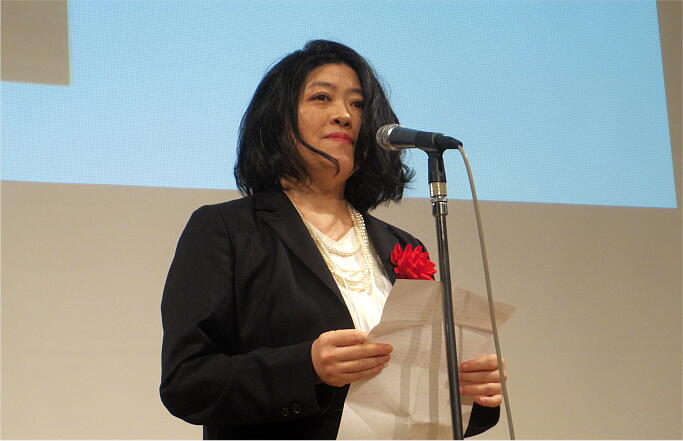Memo #404
By: Akiko Hirao – akiko.hirao [at] gmail.com

Women “pregnant” with the fetus of an alien species that allows them to teleport instantaneously as essential transporters of troops and supplies in a desperate war against oppressors – this is the premise of the award-winning manga by Shirai Yumiko, Wombs. An allegorical tale of conflicting and contradictory roles women are forced into by a male dominated society, it juxtaposes the state, which would be powerless without these women soldiers, and the women’s conflicted senses of empowerment and disenfranchisement. While the manga focuses on one young woman named Mana Oga and her life as a new recruit, and the development of a sisterhood with the other members of her corps and her commanding officers, competing meanings are layered onto her physical body, with emphasis on her reproductive organs. These correspond to many of the realities surrounding women and reproduction rights in Japan today.
In a key moment of the story, Mana notices that the male officials do not look at her in the face, but are only concerned with her uterus and what is inside. These men dismiss what these women witness during their duties as “delusional.” These officials make strategic decisions that stem from their view the women are not soldiers or people but merely tools or weapons. Analogously, the Japanese government labels low birthrates and shortage of public childcare as just “women’s issues.” At the same time, the government demands, under the banner of gender equality in the workforce, that women be economically as productive as male counterparts in society. The manga reflects this double-bind by creating a world in which women’s reproductive capacities are usurped, but in return, these women hold within them a destructive power that is crucial to the state’s survival.
The manga depicts possibilities of solidarity among women with diverse backgrounds, and the contradictory outcomes of complying with the demands of a male-dominant government and society. The women who survive are glorified and remembered after the war ends, while others are forgotten, parallel to the Japanese government policy to create a society in which women can “shine” as work place heroes, as Prime Minister Abe’s cabinet slogan mandates, but are also expected to produce babies for the country. The end of the war within the text of Wombs prompts further questions about the larger context of the on-going, multiple demands placed on women’s bodies in post-industrial Japan.
About the Author:
Akiko Hirao is a Ph.D. student in the Department of Asian Studies at the University of British Columbia. Her research focuses on modern Japanese science fiction.

The 5 volumes (complete) of Wombs. (Credit: IGN Japan)

Shirai Yumiko after winning the 37th Nihon SF Taishō Award for her manga Wombs in 2017. (Credit: IGN Japan)
Links
- Donna Haraway. “The Biopolitics of Postmodern Bodies: Constitutions of Self in Immune System Discourse,” in Simians, Cyborgs, and Women. New York: Routledge, 1991. 203-231.
- “General Meeting on March 2016,” Gender Equality Bureau Cabinet Office.
- Japan Media Arts Festival. “WOMBS, Jury Selections, Manga Division, 2010 [14th],” Japan Media Arts Festival Archive.
- Louella Matsunaga. “Bodies in question: narrating the body in contemporary Japan,” Contemporary Japan 27, no. 1 (2015): 1-11.
Related Memos:
See our other memos on Japan.